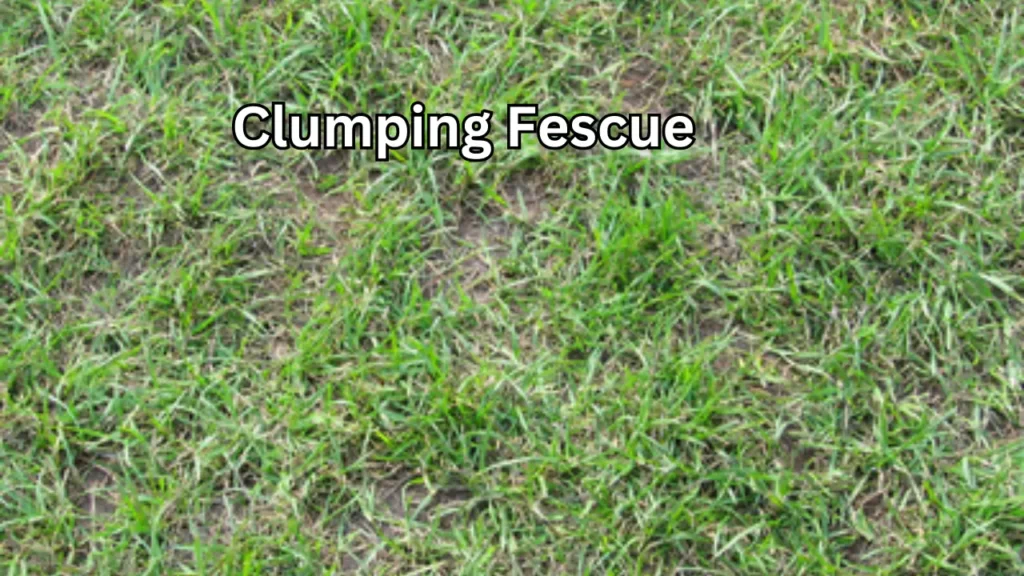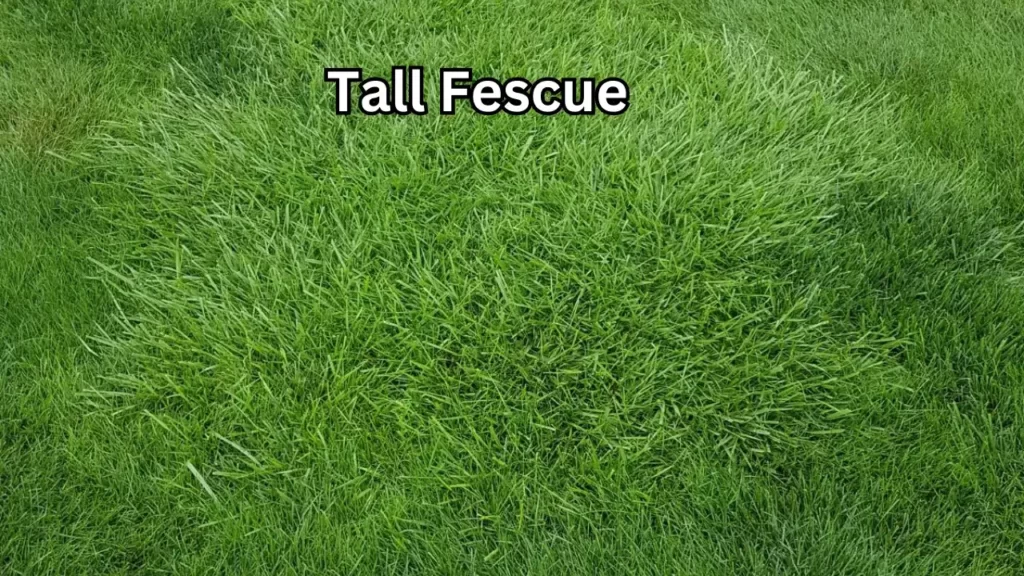When it comes to choosing the right grass for your garden or lawn, there are many options available. And Clumping Fescue and Tall Fescue are one of the popular grasses chosen by most homeowners. But both of these grasses belong to the same family but their distinct characteristics and features make them different from each other.
So, here in this article, we will explore the difference between Clumping Fescue vs Tall Fescue and which one is the best choice to add to your garden or any landscape.

Clumping Fescue vs Tall Fescue a Quick Comparison
| Differences | Tall Fescue | |
|---|---|---|
| Growth Habit | Forms compact clumps or mounds | Grows in dense tufts with an upright growth habit |
| Appearance | Blue-green foliage with a fine texture | Darker green color with wider and coarser leaves |
| Height | Typically grows up to 8-12 inches | Can reach heights of 2-3 feet |
| Cold Tolerance | Excellent cold tolerance, withstands freezing temperatures | Excellent cold tolerance withstands freezing temperatures |
| Heat and Drought Tolerance | Prefers a well-drained soil with a slightly acidic pH | Better heat and drought tolerance |
| Environmental Adaptability | Thrives in colder climates and harsh winters | Adaptable to a wide range of climatic conditions |
| Watering Requirements | Requires less frequent watering compared to tall fescue | Regular watering is necessary |
| Soil Conditions | Prefers well-drained soil with a slightly acidic pH | Tolerates a broader range of soil conditions |
| Uses | Suitable for decorative purposes, rockeries, containers | Ideal for lawns, parks, and areas with heavy foot traffic |
| Texture | Fine texture | Coarser texture |
Also Read: Red Fescue vs Tall Fescue which one is best for your garden
Characteristics of Clumping Fescue
Clumping fescue, scientifically known as Festuca glauca, is a cool-season grass variety that belongs to the Poaceae family. This grass species is known for its compact, clumping growth habit and attractive blue-gree foilage. The narrow leaves of the clumping fescue give a dense ornamental appearance, Due to this appearance of this grass most people choose this grass as a decoration in their garden and landscape.

Characteristics of Tall Fescue
Tall fescue, scientifically known as Festuca arundinacea, is another cool-season grass that belongs to the Poaceae family. The Tall fescue leaves are broader and form upright growth with the darker green color leaves. This grass is robust and has the ability to survive in various soil conditions making it suitable for different lawn and landscape conditions.
Growth Habits and Appearance
Understanding Clumping Fescue
The clumping fescue has the tufted growth habit which forms the mounds or clumps. The individual clumps spread slowly which gives a neat and organized grass appearance. Also, the fine blue-green hue gives an extra aesthetic appeal to any landscape with the clumping fescue. It grows up to a height of around 8-12 inches, making it suitable for both residential lawns and commercial settings.
Understanding Tall Fescue
As the name suggests the tall fescue grows taller compared to the clumping fescue. These grasses have the bunch-type growth habit forming dense tufts with upright blades. The leaves of the tall fescue are wider and coarser compared to the clumping fescue. Also, the Tall fescue can grow up to 2-3 feet which makes this grass ideal for areas that require a more substantial and robust appearance.
Environmental Adaptability
The clumping fescue and the tall fescue both are cool-season grasses So both of these grass species thrive in regions with moderate temperatures and adequate rainfall. But they do have some differences in terms of environmental adaptability.
The clumping fescue is known for its tolerance capability in extreme cold wethers. This grass can survive in freezing temperatures and in a region with harsh winters. So due to its cold weather survival ability, it is a good choice for the region with extremely cold temperatures.
On the other hand, tall fescue can tolerate a wide range of climate conditions. Tall fescue can tolerate heat climates where it can survive in drought conditions also. So, this grass will be a good choice for people with summers who may have to face drought seasons.
Also Read: How to dethatch Bermuda grass in easy steps
Maintenance and Care
To keep your lawn or garden healthy and green you have to maintain it properly. So, here are some of the maintaining tips for clumping fescue and tall fescue to keep them healthy.
Watering Requirements
Regular water is required for both clumping and tall fescue to keep them healthy with a lush appearance. However, the clumping fescue is more drought tolerant compared to tall fescue so it needs less water. So, it is essential to regularly check the moisture level of the soil to keep them in optimal condition for grasses to grow properly.
Fertilization and Soil Conditions
Regular fertilization of both grasses can improve their health and growth. Conduct a soil test to determine if the soil has the appropriate nutrients, if not then fertilize the soil as required. The clumping fescue prefers well-drained soil with a slightly acidic pH. Where on the other hand tall fescue can grow in a wide range of soil conditions.
Now if you think that the acidic pH of the soil is not appropriate then you can apply Garden Lye to your garden soil to make it pH level suitable for the grass.

Mowing and Trimming
Proper moving of both types of grass will keep them at the ideal height and appearance. The clumping fescue needs to be at a height of 2-3 inches. Whereas the tall fescue has to be a little taller at 3-4 inches. Also, regular trimming and removing the damaged part is also important to promote healthy growth.
Disease and Pest Resistance
Both the clumping fescue and the tall fescue are commonly resistant to most garden diseases. But however, you have to regularly check the grasses for any diseases or such as brown patches or pests like grubs. If you notice any disease make sure to implement appropriate preventive measures and promptly treat to maintain a healthy lawn.
Best Uses for Clumping Fescue
The compact growth and the ornamental appearance of the clumping fescue make it a popular choice for decorative purposes. It works well as an accent plant in gardens, borders, or rockeries. The clumping fescue can grow in the container also which makes this grass suitable for container and rooftop gardening also.
Best Uses for Tall Fescue
The robust nature and adaptability of the tall fescue make it perfect for lawns, parks, and athletic fields. The ability of the tall fescue to tolerate heavy foot traffic and recover quickly from damage makes it suitable for areas with huge traffic or use. The tall fescue can perform well in moderate shadow also which makes it a versatile option for various landscaping needs.
Also Read: How to Trim the garden hedges from the hedge clippers & Trimmers
Pros and Cons of Clumping Fescue
Pros
- Compact and clumping growth habit
- Ornamental appearance
- Excellent cold tolerance
- Low water requirements
Cons
- Limited heat tolerance compared to tall fescue
- Slower spreading compared to other grass types
Pros and Cons of Tall Fescue
Pros
- Versatile and adaptable to various soil conditions
- Better heat and drought tolerance compared to clumping fescue
- Performs well in areas with heavy foot traffic
- Good recovery ability after damage or wear
Cons
- Coarser texture compared to clumping fescue
- Requires regular watering in dry conditions
FAQs
Can I mix clumping fescue and tall fescue in my lawn?
Yes, you can mix clumping fescue and tall fescue on a lawn. But keep in mind that both of these grasses are different growth habits and their appearance can affect the visual appeal of the lawn.
Which grass type is more drought-tolerant?
The tall fescue is generally more drought tolerant compared to the clumping fescue.
Is clumping fescue suitable for shaded areas?
No, the clumping fescue can grow in some shade but it will perform best in areas with full sun or partial shade.
How often should I mow tall fescue grass?
Tall fescue grass should be mowed regularly to maintain its desired height. Aim to mow it when it reaches a height of around 3-4 inches, and never remove more than one-third of the grass blade length at a time.
What is the ideal soil pH for growing clumping fescue?
Clumping fescue prefers slightly acidic soil with a pH range of 5.5 to 6.5. Conduct the soil test to determine the soil pH if it’s not proper use other methods to make it perfect.
Conclusion
Now both the clumping and tall fescue have their own advantages and disadvantages making it perfect for ideal conditions. So, choose the right grass in between them based on your environmental condition according to their survival ability. Also, maintain and take care of them regularly to promote healthy growth.
